Enter Sandman
By: Sean Utley
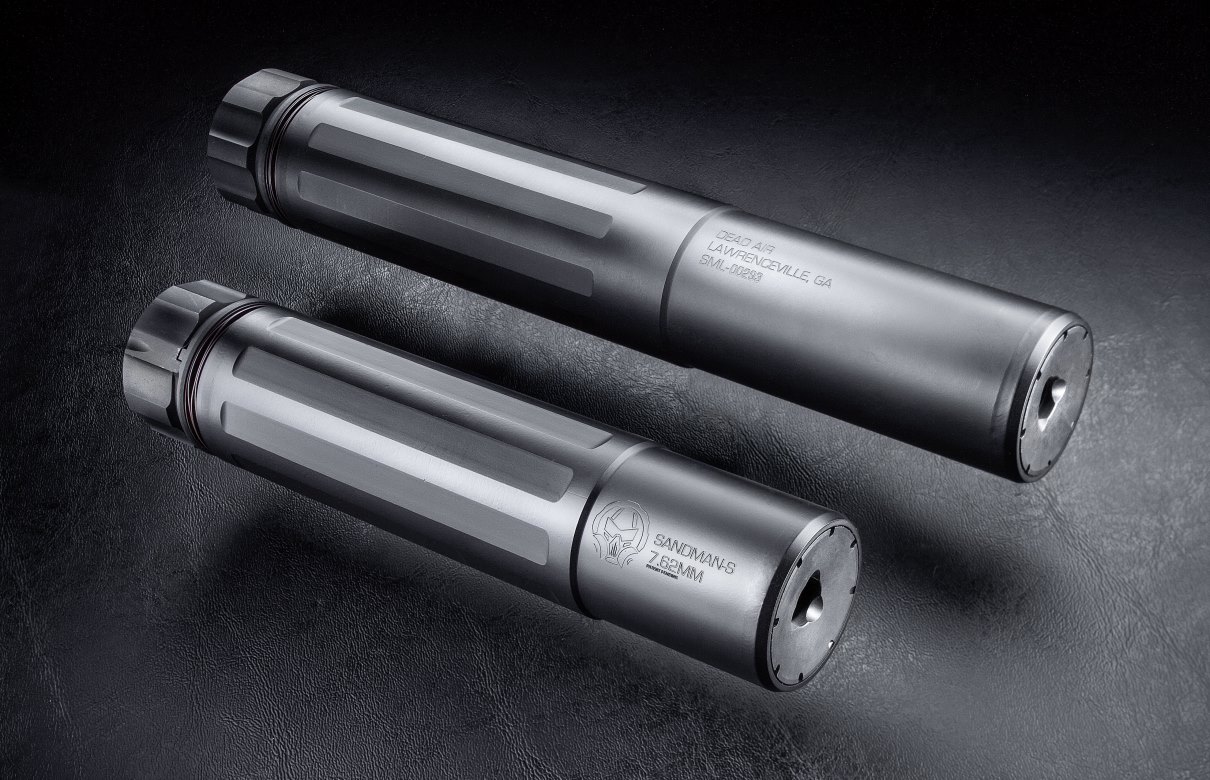 Dead Air Sandman S/L suppressors are made of Stellite and stainless steel. Stellite alloy is a range of cobalt-chromium alloys designed for wear resistance. It may also contain tungsten or molybdenum and a small but important amount of carbon. (Photo courtesy of "Shooting Times")
Dead Air Sandman S/L suppressors are made of Stellite and stainless steel. Stellite alloy is a range of cobalt-chromium alloys designed for wear resistance. It may also contain tungsten or molybdenum and a small but important amount of carbon. (Photo courtesy of "Shooting Times")
The Dead Air Sandman comes in long and short
In Lawrenceville, Georgia, there sits a company, and in that company sits a man. The primary goal of both is to design and build the best suppressors in the industry. The company is Dead Air Armament. The man is Mike Pappas, head of product development. It’s a disservice to you as a potential Dead Air customer to simply cover its silencers without diving a little deeper into the driving force behind the company.
Mike Pappas started Dead Air Silencers in October 2013, so that makes Dead Air new to silencers, right? Wrong. While the formation of Dead Air is fairly recent, the originating crew of the company brings more than 20 years of suppressor experience with them. Pappas was a founding partner of SilencerCo back in 2008. After five years, he and SilencerCo parted ways. Shortly after his departure, he joined forces with a man named Eric Rogers to form Dead Air Armament. Now, they work diligently to bring us unrivaled suppressor sound technology and design. Good for them, good for us.
During a conversation with Pappas, it was immediately clear that he is passionate about suppressors. While many things were discussed, it was this statement by Pappas that told the whole tale: “I do this because I love what I do; it’s not simply a matter of dollars and cents … I have everything I want. I want to make great cans and something people will be proud to own, and that makes them happy.” A strong desire to bring high-quality, cool stuff to the masses is a great motivation and the perfect place to start.
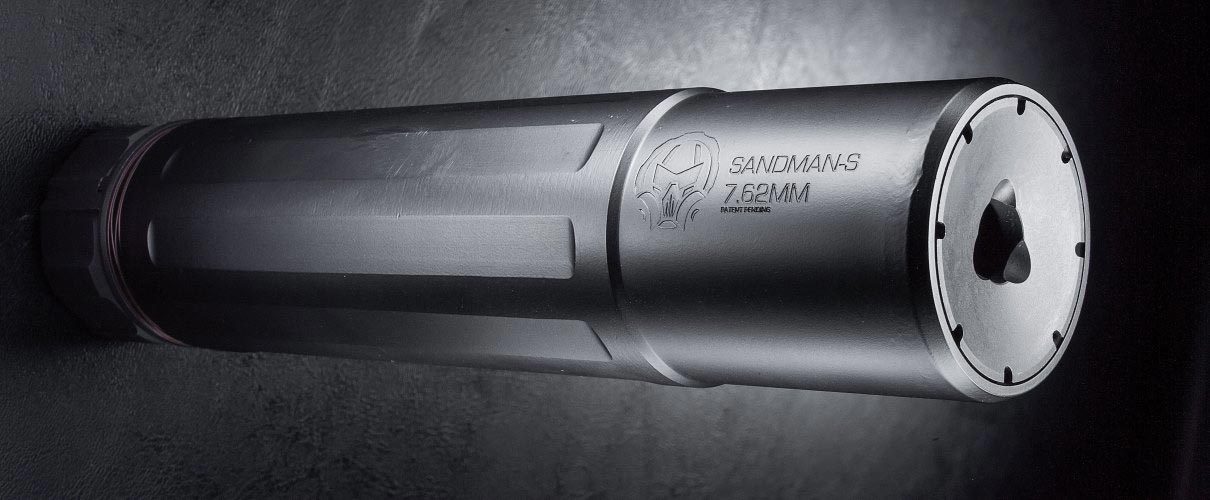
Dead Air 7.62 Sandman S Suppressor (Photo courtesy of “Shooting Times”)
Dead Air’s first product entry into the market is the Sandman line. The Sandman is a multicaliber can, a great way to establish an initial product list. A well-designed .30-caliber can is versatile and advantageous.
The Sandman comes in three different versions: the 7.62 Sandman L, a 9-inch-long silencer; the 7.62 Sandman S, a shorter version with a length of 6.8 inches; and the 7.62 Sandman-Ti, which is slightly shorter than the Sandman L but features a titanium outer sleeve. It’s also a direct-thread-attachment type that resonates with precision shooters.
The Sandman S and L are quick-attach/detach devices and connect by way of their supplied muzzlebrake. This QD system features grooves cut in the muzzle device that allow the can to go on only one way, so costly mistakes such as baffle strikes and launching the suppressor downrange can be avoided. It also allows it to be tightened the same way consistently, which will help with a repeatable point-of-impact shift. Suppressor magazine had the S and L versions on hand for testing.
Dead Air Sandman S/L Specs
Caliber: Up to .300 Win. Mag.
Weight: 18.5, 23.4 oz.
Overall Length: 6.8, 8.9 in.
Materials: Stellite, stainless steel
Noise Rating: 136 dB for both
Attachment Type: QD
Finish: Cerakote body, nitrided muzzle device
MRSP: $1,049, $1199
Manufacturer: Dead Air Silencers
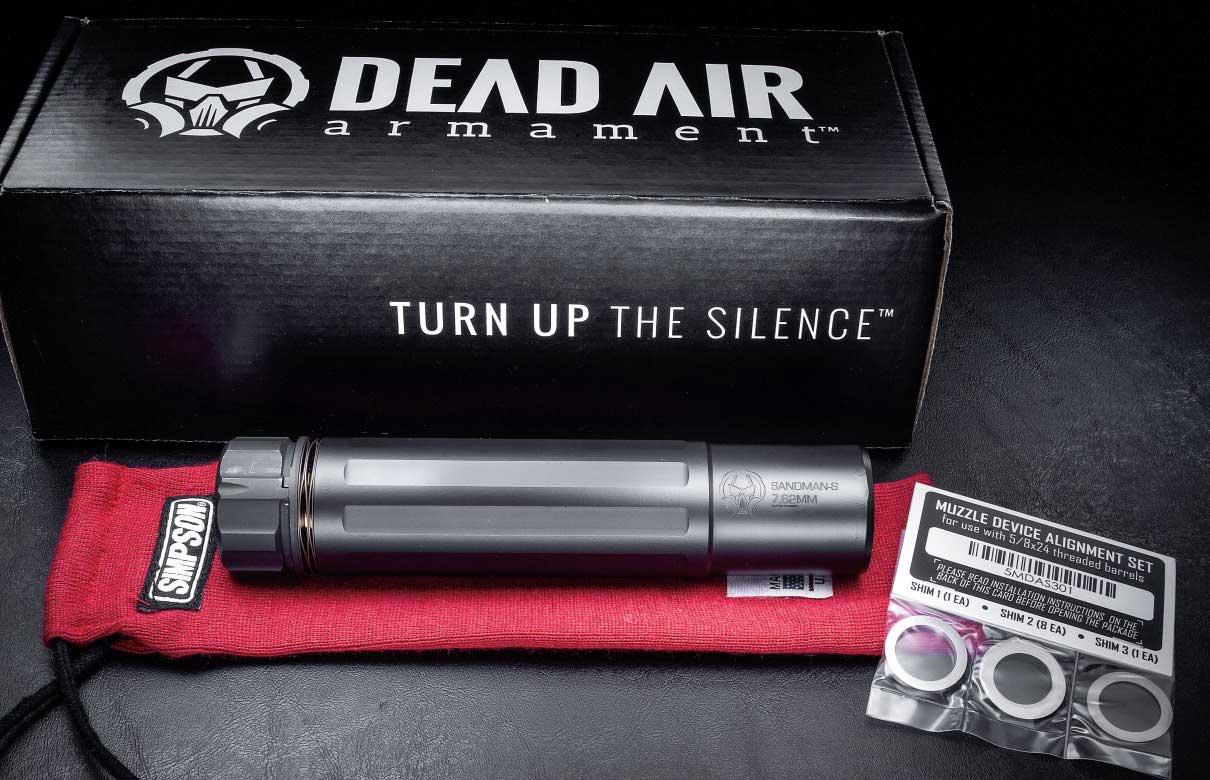
Dead Air’s presentation is excellent, giving the owner the feeling of acquiring something special. (Photo courtesy of “Shooting Times”)
Let’s address how good-looking these Dead Air cans are. When we consider that for the most part, suppressors will always be cylindrical, we quickly realize how it could become difficult to differentiate your products’ aesthetics. The Sandman is beautiful. The machining of the lines is just right, with enough variation in surface areas to make it very interesting – engaging if you will – without going overboard and appearing as if the designers tried too hard. These good looks are important for a couple of reasons.
First, the flats that are cut into the Sandman aid in getting a grip on the can with a wrench, pliers or a vise, if necessary. Here’s the other reason why good looks are important. Guns themselves are relatively easy to acquire. Many owners have more than one, and the process to acquire one is pretty much routine. For suppressors, though, that’s not the case. When you make up your mind to acquire an NFA weapon, the process is different. It is more labor intensive, the wait is long, and the product is definitely one of disposable income. In short, it’s rare and special.
Because of all of the focused and time-consuming efforts, the product being acquiring should be special in every way possible, from function to form. Once you’ve taken on the task of purchasing a suppressor, you should be nothing less than giddy every time you think of what you’re waiting on, and you should feel like a kid at Christmas once you finally bring it home. Dead Air silencers will have you doing all of the above.
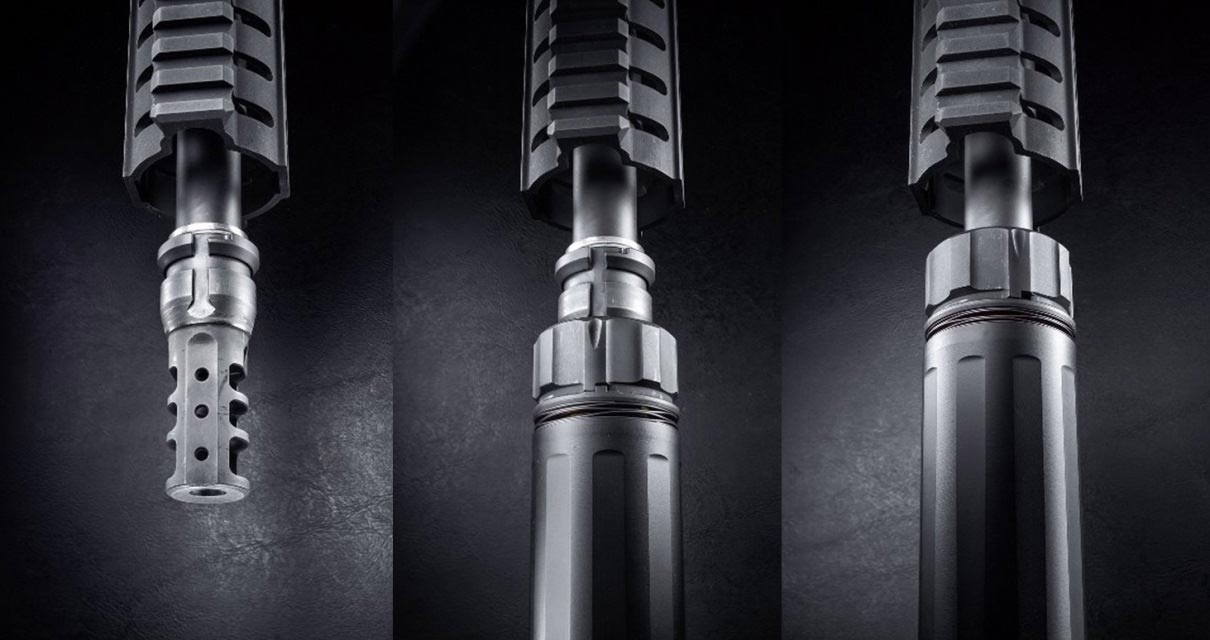
The Sandman is clearly marked where the suppressor and brake interface. (Photo courtesy of “Shooting Times”)
Getting back to the serious stuff, the Sandman S and Sandman L are not exactly lightweight silencers. The S weighs more than 1 pound, 4 ounces on our scale, and the L is heavier than 1 pound, 7 ounces. Remember that more weight can have more impact on zero shift. I mentioned this to Pappas, and he commented that suppressors need to be designed a certain way in order to last. The S and L models are heavy-duty, full-auto-rated suppressors meant to take a metric ton of beating. There is a direct correlation between can weight and durability when you’re talking about well-designed suppressors.
All three versions feature solid-weld Stellite baffles. This is a tough construction. Stellite is a rugged material that is stronger than Inconel and very dense. The Sandman-Ti is a smidge over a pound at 16.8 ounces, according to Dead Air’s literature. The L isn’t just longer than the S. It’s quieter, with a 31 dB reduction rating with regular 7.62 ammunition as compared to 27 dB with the S. Each Sandman is rated to .300 Win. Mag., and each model comes with a lifetime warranty.
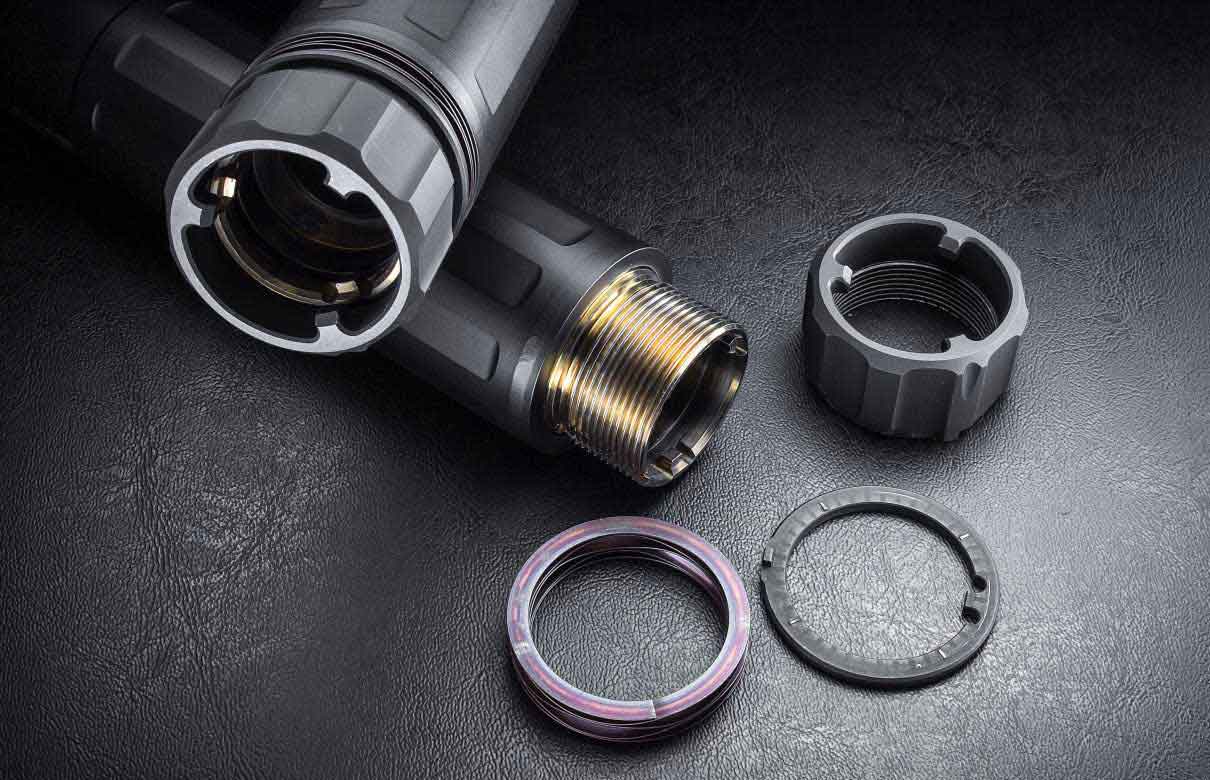
The locking nut is removable for servicing. This could also be a sign of future mounting options. (Photo courtesy of “Shooting Times”)
The end cap of the Sandman is removable. It also features an integrated flash hider. There are no other functions associated with the removable end caps, but other options will eventually make their way to market. The attachment system comprises the spring and detent and is user serviceable as well. It can be removed by unscrewing the locking nut. Its movement is limited by stops that you’ll need to maneuver around by pressing down on the spring while unscrewing the locking nut.
Behind the Sandman
Both the S and L versions were tested. The S was placed on a 16-inch 5.56 BCM RECCE 16 and the Sandman L on a 12½-inch CMMG Mk3 K in .308. We should note that both the Sandman S and L are capable of handling the punishment from a 12½-inch-barrel .308.
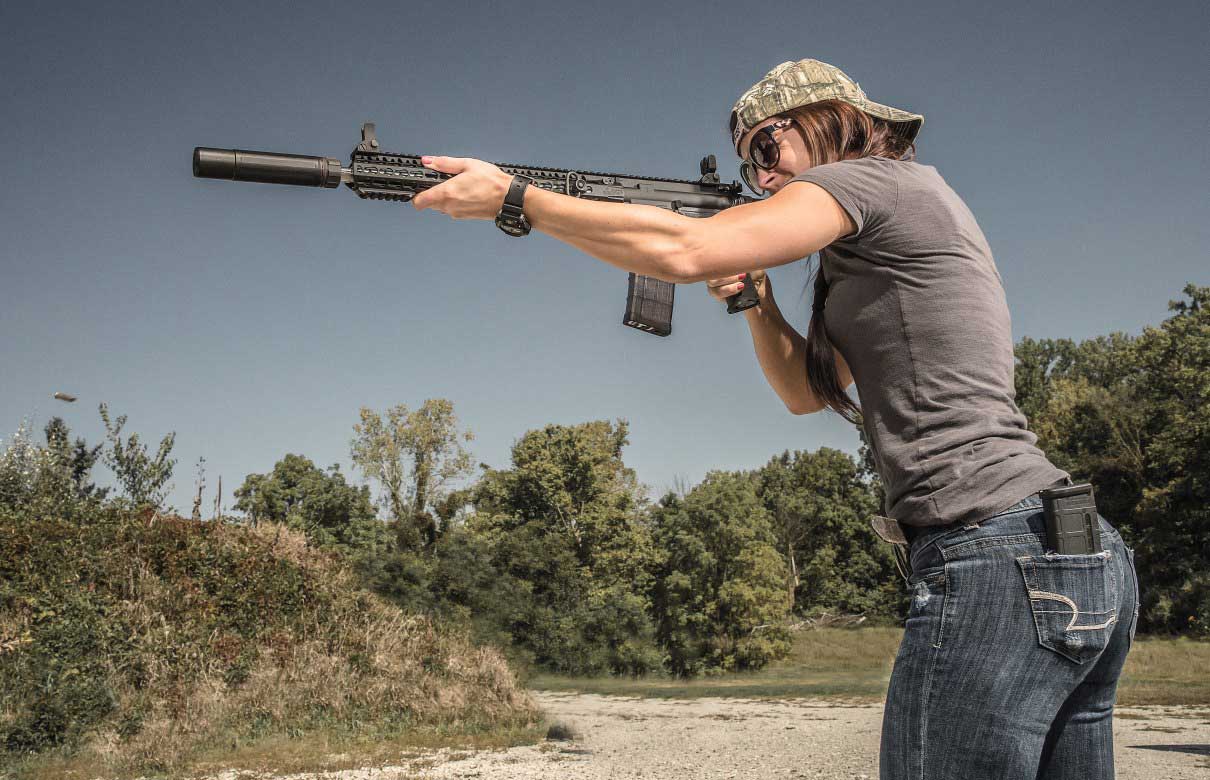
(Photo courtesy of “Shooting Times”)
From the outset, the CMMG .308 SBR was overgassed, so adding the Sandman L was only going to exacerbate the punishment to the gun. A Gemtech Suppressor BCG was immediately placed inside the .308, and with the carrier’s selector on suppressed, the gun ran well without the suppressor attached. This gun might have been rendered useless with the Sandman attached and no Gemtech BCG. This is why it’s important to know your firearm before purchasing a suppressor.
Dead Air Sandman L Performance
| CMMG Mk3 K .308 SBR Federal 168-gr. GMM |
Velocity (fps) |
Standard
Deviation |
Extreme Spread |
Av.
Group (in.) |
Best
Group (in.) |
| Unsuppressed |
2,337 |
15 |
38 |
2.2 |
1.8 |
| Suppressed |
2,283 |
34 |
85 |
1.4 |
1.28 |
POI Shift: Yes, 1.7 in. high, 1.6 left.
POI Shift Repeatable: Yes
Accuracy results are the average of three five-shot groups at 100 yards. Velocity figures
are derived from a string of five rounds measured by a chrono 12 feet from the muzzle.
Dead Air Sandman S Performance
| BCM RECCE 16 Gorilla 69 gr. |
Velocity (fps) |
Standard
Deviation |
Extreme Spread |
Av.
Group (in.) |
Best
Group (in.) |
| Unsuppressed |
2,666 |
20 |
47 |
1.10 |
.88 |
| Suppressed |
2,680 |
8 |
23 |
1.19 |
.87 |
POI Shift: Yes, 1.8 in. high, 1.5 right.
POI Shift Repeatable: Yes
Accuracy results are the average of three five-shot groups at 100 yards. Velocity figures
are derived from a string of five rounds measured by a chrono 12 feet from the muzzle.
This is one of those cases where the addition of a suppressor had a major improvement on the host weapon’s accuracy. The best group from the CMMG improved by over a half inch with the Sandman L.
The BCM RECCE 16 with the Sandman S didn’t respond the same as the CMMG, and this is not a negative. Average groups were only different by .008 inch and best group by .09 inch. It’s safe to say the Sandman had no negative impact on the BCM’s accuracy. The Sandman S greatly improved the shooting experience and was very quiet to boot. It created a deeper sound signature that is less piercing than some of the higher-pitched signatures of suppressed 5.56. This is one of those examples where sound rating alone shouldn’t be your only determining factor in a suppressor purchase. The entire shooting experience with this firearm/suppressor combo was excellent and made us want to shoot it all day. Take the time to ensure that your own combo performs likewise.
Dead Air is just getting started. It’s evident that its leadership has the passion to continue to design quality suppressors with great levels of performance on all fronts. It’ll be exciting to see what it comes up with next.